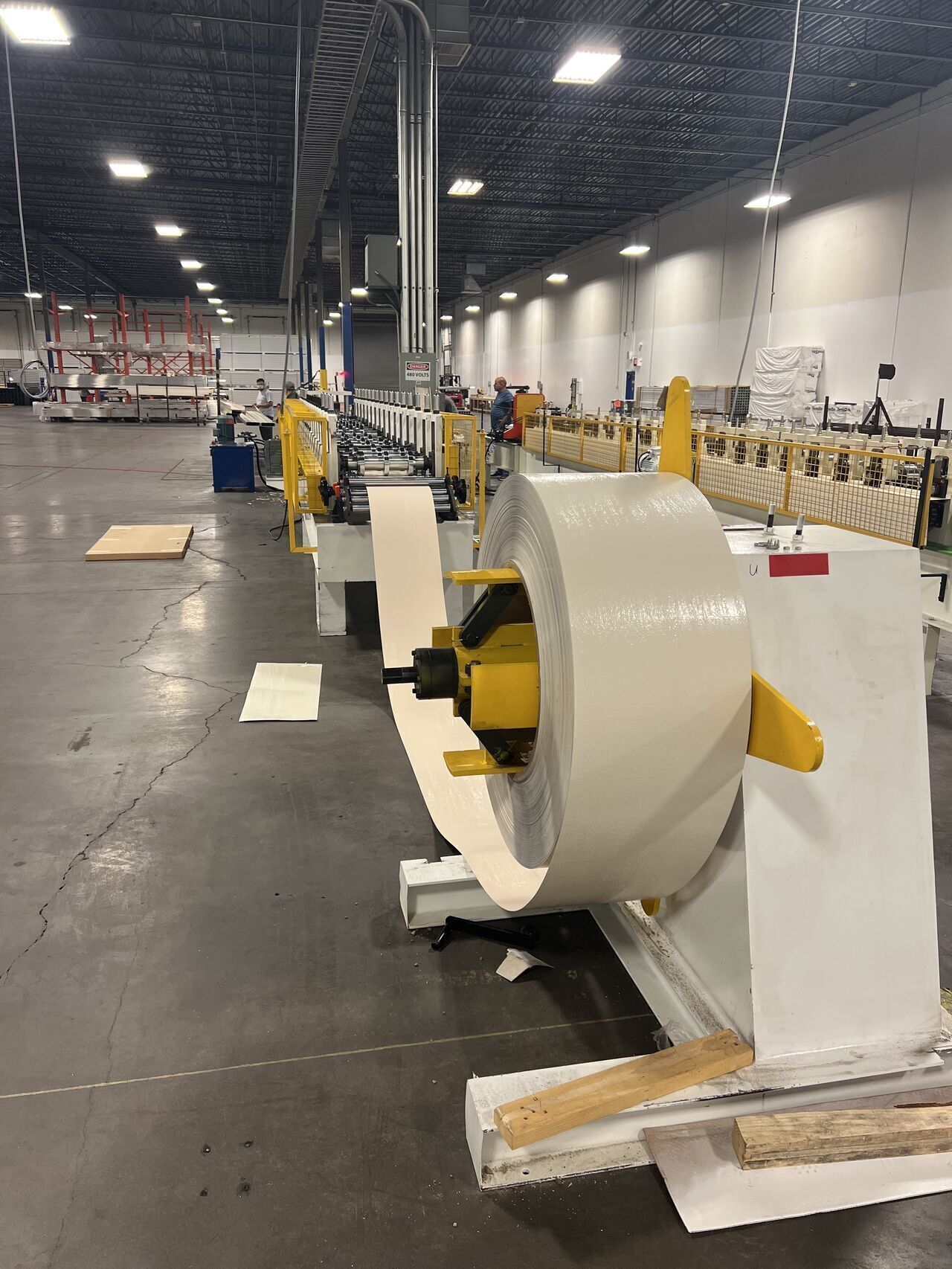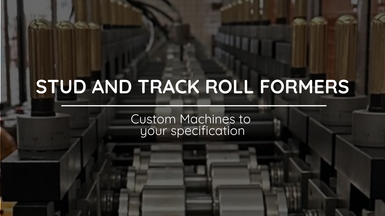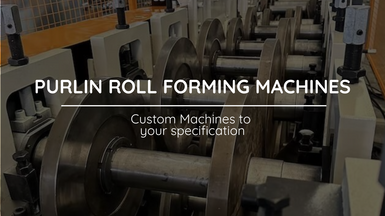
Metal Roof Flashing
The choice of metal for flashing depends on factors such as climate, budget, and aesthetic preferences.
Posted on Tuesday, November 21, 2023
Metal roof flashing is a crucial component in roofing systems, as it helps prevent water from penetrating the roof and causing leaks. Flashing is typically made from durable materials such as aluminum, steel, or copper, and it is designed to direct water away from vulnerable areas of the roof, such as joints, seams, valleys, and roof penetrations (like chimneys, vents, and skylights).
Here are some common types of metal roof flashing:
- Step Flashing: Step flashing is used in roof-wall intersections. It consists of small L-shaped pieces of metal that are layered one over the other as shingles or other roofing materials are installed up the wall. This creates a water-resistant barrier in areas where the roof meets vertical surfaces.
- Valley Flashing: Valley flashing is installed in roof valleys, where two roof planes come together. It helps channel water down the valley and away from the roof's interior.
- Chimney Flashing: Chimney flashing is used to seal the area where the chimney penetrates the roof. It typically consists of a base flashing (step flashing or continuous flashing) and a counter-flashing that fits over the chimney.
- Vent Pipe Flashing: Vent pipe flashing is used around plumbing vent pipes that protrude through the roof. It forms a watertight seal to prevent water from entering the roof through these openings.
- Drip Edge Flashing: Drip edge flashing is installed along the edges of the roof to direct water away from the fascia and into the gutters. It also helps protect the roof deck from water damage.
- Ridge Flashing: Ridge flashing is used along the ridge of the roof to prevent water infiltration at this high point. It can be in the form of ridge cap shingles or specialized metal ridge flashing.
- Eave Flashing: Eave flashing is installed at the eaves of the roof to protect against ice dams and to provide a clean edge for the roofing material.
The choice of metal for flashing depends on factors such as climate, budget, and aesthetic preferences. Proper installation of flashing is critical to ensure the long-term performance and integrity of a roofing system. It's essential to follow manufacturer guidelines and local building codes when installing metal roof flashing to ensure it functions effectively and protects the building from water damage.
How To Manufacture Metal roof flashing
Manufacturing metal roof flashing involves several steps, including material selection, fabrication, and quality control. Here's an overview of the process:
Materials Needed:
- Metal sheets (aluminum, steel, copper, or other suitable materials)
- Cutting and bending equipment (e.g., shears, brakes)
- Measuring tools (e.g., tape measure, calipers)
- Safety equipment (e.g., gloves, safety glasses)
- Fasteners (screws, nails) if needed
- Template or design specifications
Manufacturing Steps:
- Material Selection:
- Choose the appropriate metal material for the specific flashing requirements. The choice of material will depend on factors such as climate, budget, and aesthetic preferences.
- Design and Template:
- Create a template or design specifications for the required flashing components. This template will serve as a guide for cutting and bending the metal sheets accurately.
- Cutting:
- Use cutting equipment like shears to cut the metal sheets into the desired size and shape, following the template or design specifications. Precision is essential to ensure a proper fit.
- Bending:
- Employ a metal brake or similar bending equipment to bend the metal sheets into the desired angles and shapes. This step is crucial for forming components like step flashing or chimney flashing.
- Assembly (if necessary):
- Depending on the design and type of flashing, you may need to assemble multiple pieces together. For example, step flashing often involves overlapping L-shaped pieces.
- Quality Control:
- Inspect each flashing component for accuracy in size, shape, and angles. Ensure that all seams are properly sealed, and there are no sharp edges that could cause injury during installation.
- Surface Treatment (optional):
- Depending on the chosen metal material, you may need to apply surface treatments such as paint, powder coating, or galvanization to enhance corrosion resistance and aesthetics.
- Packaging:
- Package the manufactured flashing components securely to protect them during storage and transportation.
- Labeling and Documentation (if required):
- Label the flashing components with relevant information, such as dimensions, material type, and installation instructions, if applicable.
- Shipping and Distribution:
- Distribute the manufactured metal roof flashing to wholesalers, retailers, or contractors as needed.
It's essential to follow industry standards and quality control measures throughout the manufacturing process to ensure the flashing components meet safety and performance requirements. Additionally, consider the specific needs and regulations of your target market, as building codes and climate conditions can vary by region.
Roll Forming Machines to Produce Metal Roof Flashing
- Cutting: After the metal sheet has been roll-formed into the desired shape, a cutting mechanism is used to trim the flashing component to the required length. This can be done with shear blades or flying cutoffs.
- Optional Secondary Operations: Depending on the design and complexity of the flashing component, additional secondary operations such as punching holes, embossing, or adding notches may be performed inline or in a separate station.
- Quality Control: Quality control measures, including inspections for proper dimensions and profile accuracy, are conducted to ensure that each flashing component meets the desired specifications.
- Stacking or Packaging: The finished flashing components are stacked, bundled, or packaged for shipment or storage.
Advantages of Using Roll Forming Machines for Metal Roof Flashing:
- High Precision: Roll forming machines provide precise and consistent bending and shaping of metal sheets, ensuring that flashing components meet exact specifications.
- Efficiency: Roll forming is a continuous process, allowing for high production rates and reduced labor costs compared to manual fabrication.
- Versatility: Roll forming machines can be customized to produce various types and sizes of metal roof flashing profiles, accommodating a wide range of applications.
- Material Efficiency: Roll forming minimizes material waste by utilizing the entire width of the metal coil efficiently.
- Consistent Quality: The automated nature of roll forming ensures consistent quality in each flashing component produced.
When considering the purchase of a roll forming machine for producing metal roof flashing, it's important to work with reputable manufacturers or suppliers who can provide a machine tailored to your specific needs. Proper training and maintenance of the machine are also crucial for optimal performance and longevity.
What Are Metal Roof Flashing Used for
Metal roof flashing is used in roofing systems to prevent water infiltration and to direct water away from vulnerable areas, joints, seams, and roof penetrations. It plays a crucial role in maintaining the integrity of a roof and preventing leaks. Here are some common applications and purposes of metal roof flashing:
- Roof-Wall Intersections: Metal step flashing is installed in the joint where the roof meets a vertical wall, such as a sidewall or chimney. This flashing ensures that water doesn't seep into this vulnerable area.
- Valleys: Valleys are the areas where two roof planes come together, forming a "V" shape. Metal valley flashing is used to guide water down the valley and away from the roof's interior, preventing leaks and water damage.
- Chimneys: Chimney flashing consists of metal components that seal the area around a chimney where it penetrates the roof. This flashing ensures that water doesn't enter the house through gaps in this intersection.
- Vents and Pipes: Metal flashing is used around plumbing vent pipes, exhaust vents, and other roof penetrations to create a watertight seal and prevent water from entering through these openings.
- Ridge and Hip Lines: Ridge flashing and hip flashing are used along the ridges and hips of the roof to protect these high points from water infiltration.
- Drip Edge: Drip edge flashing is installed along the eaves of the roof to direct water into the gutters and away from the fascia. It also helps to protect the roof deck from water damage and prevents ice dams in cold climates.
- Transition Flashing: Transition flashing is used to transition between different roof materials or sections, such as where a sloped roof meets a flat roof or where a roof meets a dormer.
- Skylights and Roof Windows: Flashing is used around skylights and roof windows to ensure a watertight seal, preventing water from leaking into the building around these openings.
- Kickout Flashing: Kickout flashing is a specialized type of flashing used to divert water away from the wall and into the gutter when a roof intersects with a sidewall. It helps prevent water from running down the wall and causing damage.
- Z-Flashing: Z-flashing is often used as a protective barrier over horizontal surfaces, such as ledges or parapets, to prevent water from penetrating underneath.
The primary purpose of metal roof flashing is to channel water away from critical areas and to provide a waterproof barrier at vulnerable roof intersections. Properly installed flashing helps extend the life of the roofing system and prevents costly water damage to the building's interior and structure. The choice of flashing materials and installation techniques may vary based on the specific roofing system and local building codes
Roll Forming Machines LLC's New Factory
Posted on Sunday, March 23, 2025
We have relocated factories, which will be available for tours very soon.

Uncoiler, Decoiler and Coil Car Roll Forming Machine Accesories from Roll Forming Machines LLC
Posted on Sunday, November 24, 2024
Contact us today with your specifications for a custom Uncoiler, Decoiler or Coil Car at [email protected] or call us at (+1) (407) 859 1119

Stud and Track Roll Forming Machines from Roll Forming Machines LLC
Posted on Saturday, November 23, 2024
Contact us today with your specifications for a custom Stud and Track Machine at [email protected] or call us at (+1) (407) 859 1119

Cee and Zee Purlin Roll Forming Machines from Roll Forming Machines LLC
Posted on Saturday, November 23, 2024
Contact us today with your specifications for a custom Cee and Zee Purlin Machine at [email protected] or call us at (+1) (407) 859 1119